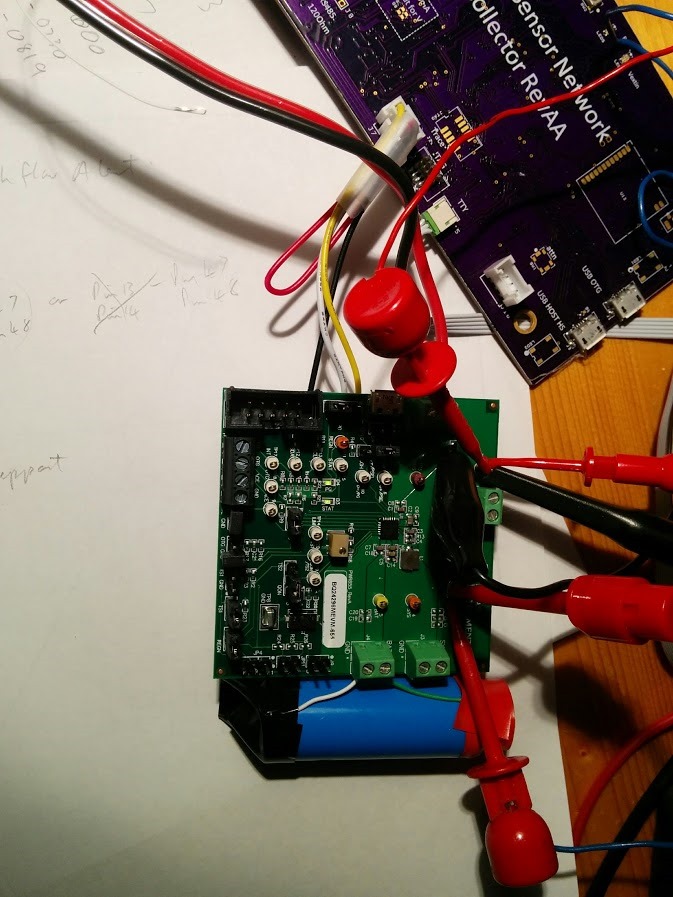Other Parts Discussed in Thread: BQ24296, BQ24296M, BQ25895M, BQ25895, EV2400, BQSTUDIO
I'm driving a BQ24296 on a BQ24296EVM - and in boost mode I can only get 100mA out of it before the voltage drops.
How much voltage variation should I expect from 0-1000mA?
On start, I've charged the attached LiIon battery with a strap on JP7 /CE. The LiIon charges to 4.22V, and is fully charged having been there for a couple hours.
I disconnect power supply on Vin, remove JP7 /CE and Voltmeter drops to 0
REG00-09 0x37 0x1b 0x60 0x11 0xb2 0x8c 0x73 0x4b 0x84 0x0
Then I put it into boost mode writing BOOST REG01[54]=10 which turns on boost and Vin goes to 5V
Then I write EN_TERM Reg05[7]=0 so no termination
0x37 0x2b 0x60 0x11 0xb2 0x0c 0x73 0x4b 0xc0 0x0
THen I apply increasing load -for following LOAD=Vin(boosted), NoLoad=4.97V, 63mA=5.01V 100mA=4.57V, 209mA=4.56V 500mA=4.52V 4.45V=1000mA Lion starts ~4.2V Battery is charged and drops to 4.0V on Load=1A
No Load REG00-09 read (twice)
0x37 0x20 0x60 0x11 0xb2 0x0c 0x73 0x4b 0xc0 0x0
200mA REG read
0x37 0x20 0x60 0x11 0xb2 0x0c 0x73 0x4b 0xc0 0x0
1A Load, LiIon~ 3.95V and voltage REG read
0x37 0x20 0x60 0x11 0xb2 0x0c 0x73 0x4b 0xc0 0x0
The Inductor IHLP2020ABER1R0M01 4.4A 46mΩ seems to be specified for it.


